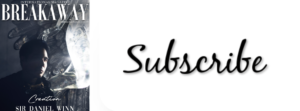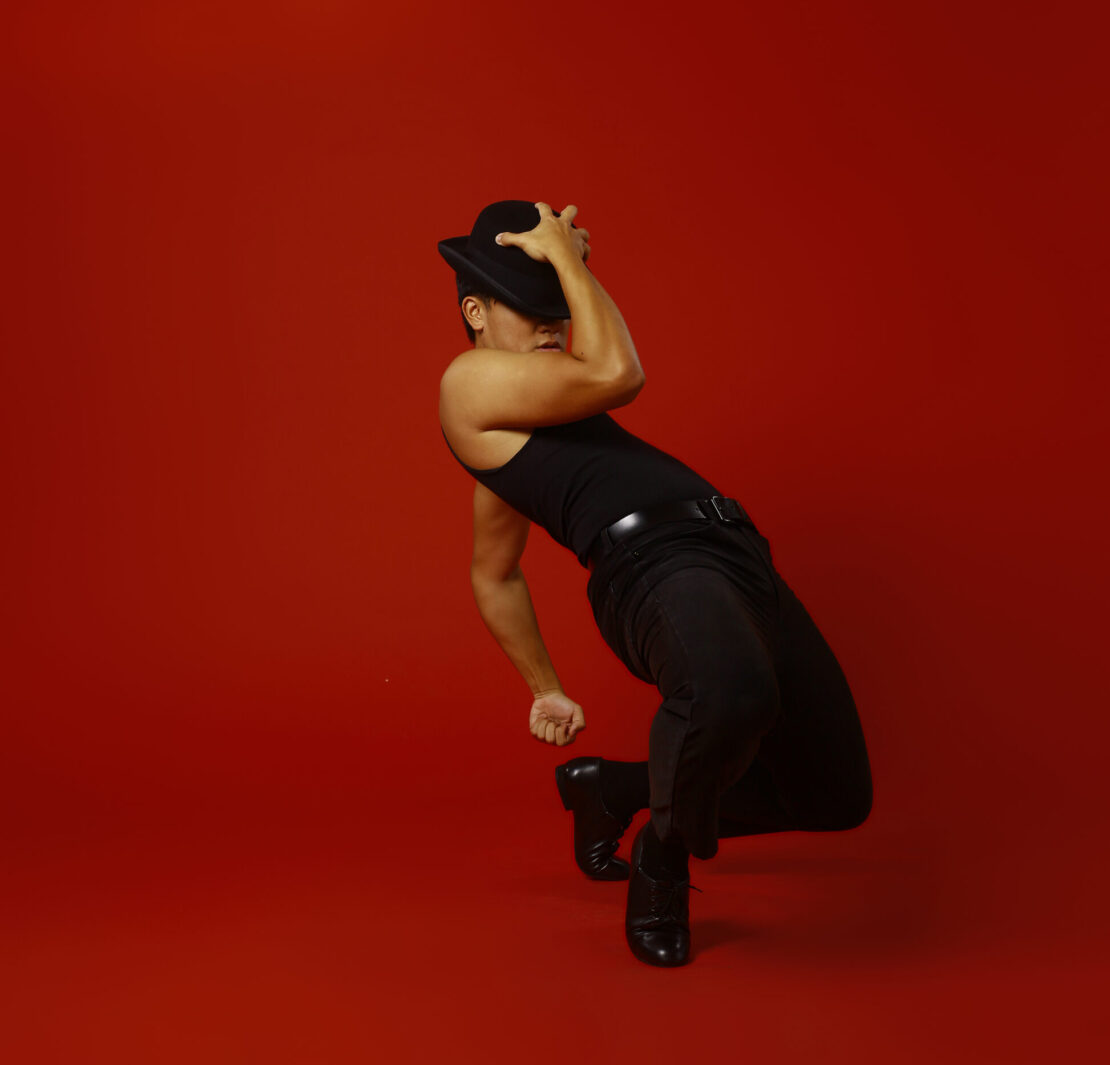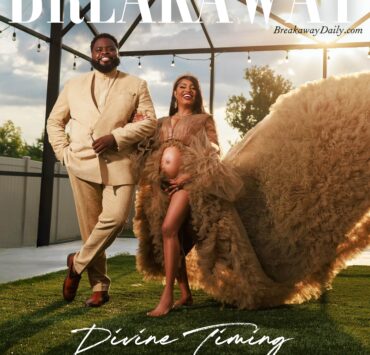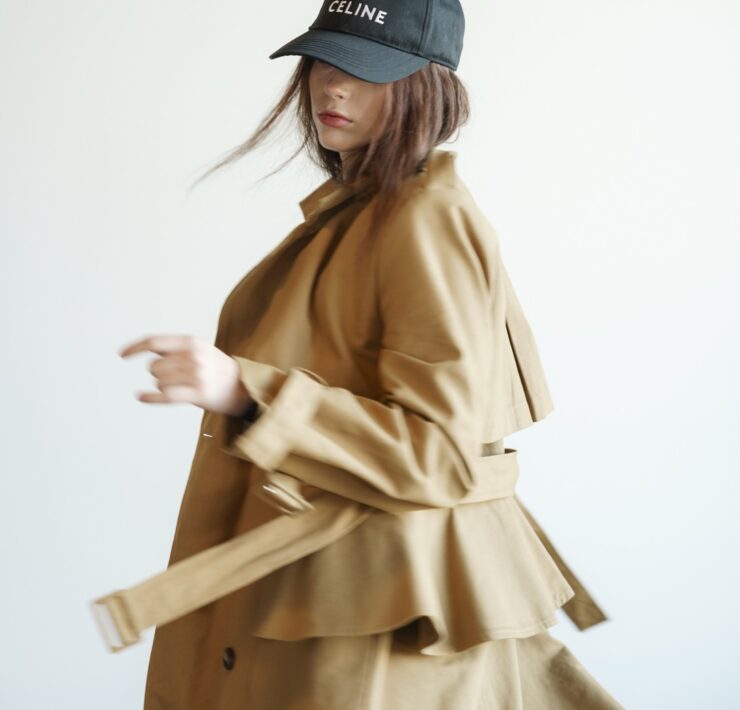With a deep commitment to the arts and a vision for advocacy, Hayden Rivas is building a career that goes beyond performance, aiming to create inclusive space, equality, and opportunity for others in the industry. He’s not just another standout in the studio; he’s a pioneer of blended ambition. he’s a dancer, academic, advocate, and creative. It’s clever, especially since he’s literally holding a hat on the cover.
Alongside his lyrical lines and powerful performances, he dove into rigorous academic territory—earning a BFA, a Master of Studies in Law, and a specialized certificate in Entertainment and Media Law. Yet, he’s never lost sight of the pulse of movement. Whether he’s negotiating contracts or stepping into rehearsal, he brings the same intensity, curiosity, and commitment. He has fearlessly pursued a path that bridges creative expression and intellectual inquiry. With a presence as commanding in the rehearsal room as it is in the classroom, he embodies a rare fusion of discipline, curiosity, and passion—redefining what it means to be a dancer in the 21st century.
How has your artistry evolved on and off stage?
My artistry feels like a living, breathing entity that continues to expand and surprise me every day. I’m deeply grateful for my time at The University of Southern California’s Glorya Kaufman School of Dance, which became the catalyst for this ongoing evolution. USC Kaufman didn’t just teach me technique, it opened doors to facets of the dance industry I never knew existed. It also provided me with an incredible cohort of dancers who constantly challenged me to grow in unexpected directions.
What drew me to USC initially was their “scholar artist” philosophy. During the application process, they emphasized pursuing diverse interests rather than narrowing your focus, which resonated deeply with someone like me who had always been pulled in multiple creative directions. Their conservatory-style program embraced this multifaceted approach, rooting students in everything from hip hop—specifically locking, whacking, and house—to jazz in both commercial and concert contexts, ballet, contemporary, and modern. Having worked in film and television as a teenager, this comprehensive approach immediately caught my attention. I didn’t want to feel confined to one path; I craved the freedom to explore all my interests.
Hayden Rivas wears many hats—artist, advocate, academic—and uses each one to push the industry forward.

USC’s “scholar artist” philosophy clearly resonated with you. What was it about their approach—and the program itself—that made you feel it was the right place to grow as both a dancer and a creative thinker?
The beauty of my USC experience was how it consistently pushed me beyond my comfort zone. As a freshman, I was certain my destiny lay with a contemporary concert dance company. But as I immersed myself in the program, I discovered my interests were far more expansive. I began taking intensive voice lessons, which led me into the world of musical theatre. Suddenly, my dance journey had a completely new dimension.
That’s when I realized something profound; my journey doesn’t have a single destination. My artistry isn’t anchored to one dance form or one ultimate dream. Instead, it’s a fluid reflection of my everyday experiences and my relentless pursuit of the same joy that, at age five, made me beg my parents for more dance classes. Every day brings new influences, new discoveries, and new ways to express the stories that move through me, both on stage and in life.
Balancing rigorous dance schedules with law studies at USC isn’t exactly easy. What motivated you to pursue such a rigorous and interdisciplinary academic path during your time at USC?
When I first arrived at USC, I never imagined I’d graduate four years later with a BFA, a Master of Studies in Law, and a certificate in Entertainment and Media Law. Honestly, I didn’t even think I’d be accepted into such a prestigious program. But I’ve always felt this insatiable hunger to explore everything USC had to offer, which led me to take full course loads throughout my time there—even pushing to twenty-one units some semesters. This intensity allowed me to complete my BFA requirements while creating space to pursue another passion at the highest level.
What began as a minor in Cinematic Arts evolved into something much deeper: a calling to advocate for artists. From day one, I knew I wanted to focus on Entertainment Law because I believe every artist deserves to understand exactly what they’re signing up for—too many talented people get taken advantage of simply because they don’t know their rights.
I won’t sugarcoat it—the schedule was brutal. Beyond juggling two degrees, I worked four different jobs to support myself. A typical day looked like this:
7 AM – 10:30 AM: Work
10:30 AM – 11:50 AM: Ballet or Cross Technique
12 PM – 1:20 PM: Contemporary, Jazz, or Hip Hop
2 PM – 4:50 PM: Repertory and Performance
5 PM – 6 PM: Quick dinner and resident advisor duties
6 PM – 10 PM: Law lectures
The key realization that made this sustainable was understanding that I genuinely craved both forms of education. This wasn’t about checking boxes or building an impressive resume; I was genuinely fascinated by what I was learning in both worlds. There was something beautiful about getting physically exhausted during dance classes and then transitioning to the mental rigor of law lectures. My body would be tired, but my mind would be sharp and ready to engage.

Learning to compartmentalize became essential to my survival.
How did you manage the mental shift between those two worlds? How do you navigate the mental and physical shift between artistic practice and academic or analytical environments?
In the dance studio, I had to be completely present in my body; feeling every muscle, every breath, every emotional nuance of the movement. There’s an immediacy to dance that demands total physical and artistic commitment. But when I walked into those law lectures, I had to shift into an entirely different mode of thinking: analytical, methodical, focused on precedent and logic rather than instinct and expression.
What surprised me was how these two worlds began to complement each other. Dance taught me discipline, time management, and how to perform under pressure—skills that proved invaluable during intense legal coursework and exams. Meanwhile, studying law sharpened my critical thinking abilities and gave me a new lens through which to view the entertainment industry I was training to enter.
The mental shift required creating clear boundaries and rituals. I’d use the walk between buildings as a transition period, consciously leaving the creative headspace of the studio and entering the analytical mindset needed for law. Sometimes I’d change clothes entirely – shedding my dance attire for something that made me feel more like a law student. These small rituals helped signal to my brain that it was time to switch gears.
Most importantly, I learned that both pursuits were feeding the same core desire: to understand and improve the systems that artists navigate. Whether I was perfecting a contemporary piece or studying contract law, I was ultimately working toward the same goal—empowering artists to thrive in an industry that can be both beautiful and brutally unforgiving.
Your passion for arts advocacy started well before law school. What early industry experiences sparked your desire to challenge the status quo and push for better treatment and protections in the performing arts industry?
My journey toward arts advocacy actually began long before I stepped into a law classroom. It started on professional sets like Disney’s Descendants 3 and NBC’s Zoey’s Extraordinary Playlist. Working in the industry as a teenager, I witnessed practices that everyone around me accepted as normal “because we were getting paid.” But I couldn’t stop questioning why choreographers were listed last on call sheets, relegated to “Additional Crew” on IMDB, why dancers were expected to eat after everyone else and then perform at full intensity, or why we were placed in inadequate green room tents and still expected to deliver our best work.
These experiences planted seeds that grew into my senior project at USC; a complete restructuring of DANC 470: Dance Leadership. This project became the perfect example of how my dual education allowed me to examine the industry on both a micro and macro scale, using legal knowledge to create practical solutions for systemic problems.
When the beloved professor who taught Dance Leadership retired and took her curriculum with her, I saw an opportunity to reimagine what leadership education could look like for artists. My legal studies had opened my eyes to crucial gaps in arts education—we weren’t teaching students about intellectual property, copyright law, business structures like LLCs, work-for-hire provisions in contracts, or visa processes for international artists. These aren’t abstract concepts; they’re the tools that determine whether artists maintain ownership of their work and fair compensation for their contributions.


What were some of the key issues you felt young artists needed to be better educated on, and how did you go about building a course that addressed them head-on?
My restructured course integrates real-world applicable knowledge that every artist needs. I collaborated with industry professionals like Dana Wilson, Vice-President of the Choreographer’s Guild, to ensure the curriculum reflected current industry challenges. We examined everything from Kyle Hanagami’s groundbreaking lawsuit to union protections through SAG and Actors’ Equity. The goal was to arm students with the knowledge they need to recognize unfair treatment and the tools to advocate for change.
But education is just the beginning. My vision extends far beyond USC’s campus. I’m planning to host day-long workshops and panels that bring together communities of professional artists, recent graduates, and current students. These aren’t just networking events, they’re strategic gatherings designed to pass down institutional knowledge and build a coalition of informed advocates who understand their rights and aren’t afraid to demand better.
You’ve spoken about the importance of artists becoming educated advocates. How do you see knowledge—especially around legal and contractual rights—playing a role in driving real change in the industry?
The reality is that change happens from the top down, which means we need creatives in leadership positions who are educated about fair practices and willing to implement them. Every artist who leaves school understanding copyright law, every choreographer who knows how to structure equitable contracts, every dancer who recognizes when they’re being undervalued—they become agents of change.


How has your legal education shaped your approach to advocacy in the arts, both on a personal level and in terms of creating broader systemic change?
My legal education has taught me that systemic change requires both individual empowerment and collective action. On the individual level, I want to work on the front lines of negotiations, ensuring artists understand what they’re signing and aren’t taken advantage of. On the collective level, I’m building educational programs that create a new generation of arts leaders who won’t accept “that’s just how things are” as an answer.
The performing arts industry has operated on outdated power structures for too long. By combining my artistic background with legal expertise, I can bridge the gap between creative passion and business acumen. I understand the artist’s perspective because I am one, but I also understand the legal frameworks that govern our industry. This dual perspective positions me to advocate effectively for policies and practices that protect artists while fostering the creativity that makes our industry thrive.
Ultimately, my goal is to create a ripple effect—to shift the entertainment landscape toward greater inclusion, empowerment, and respect for all artists’ contributions. Every workshop I aim to host, every contract I help negotiate, every young artist I educate about their rights contributes to reshaping “the way things are” into “the way things should be.” This isn’t just about individual success; it’s about creating an industry where every artist can thrive on their own terms.
What does it actually take to make it in this industry today?
Having worked across different facets of the dance industry—musical theatre, TV/film, and the concert dance world—I’ve learned that success isn’t what most people think it is. The most crucial skill isn’t your technique or even your talent; it’s developing an unshakeable relationship with rejection.
Here’s the truth nobody wants to say out loud: our job is to audition. The performance is the bonus. If I let every “no” from auditions impact my sense of worth or my commitment to this path, I wouldn’t have survived my first year in the industry. But here’s what’s even more important—those “no’s” aren’t about you most of the time. You could be the most incredible dancer in the room, but maybe they need someone two inches taller, or someone who looks like the lead actor’s sibling, or someone who fits a costume they already made. The rejection is rarely personal, but it always feels personal.


What’s something dancers aren’t told enough?
What dancers aren’t told enough is that resilience isn’t just about bouncing back—it’s about fundamentally reframing what success means. I’ve had to learn to fall in love with the journey over the product, to find joy in the growth that happens between auditions rather than just in booking the job. Every audition teaches you something. Every callback, even if it doesn’t lead to a booking, is proof that you’re on someone’s radar. Every class you take is an investment in becoming a more versatile artist.
But let’s be brutally honest about what else dancers aren’t told: this industry will test every boundary you think you have. You need to know your worth—not just artistically, but financially and professionally. Too many dancers accept poor treatment because they’re grateful for any opportunity. You need to understand contracts, know when you’re being underpaid, and be willing to advocate for yourself even when it’s uncomfortable.
You also need multiple streams of income and multiple definitions of success. The dancers who make it long-term aren’t just the ones who book the biggest shows—they’re the ones who build sustainable careers. That might mean teaching, choreographing, creating content, or like me, developing expertise in arts advocacy. The industry is changing rapidly, and the artists who thrive are the ones who adapt and create their own opportunities rather than waiting for them to appear.
Most importantly, you need to build genuine relationships, not just network. The dance world is surprisingly small, and people remember how you treat others. The assistant choreographer from that commercial you did three years ago might be casting their own project next year. The fellow dancer you supported during a difficult rehearsal process might recommend you for their next gig. Success in this industry is as much about being someone people want to work with as it is about being someone who can execute the choreography.
What’s one lesson you wish more young performers understood about the emotional side of this industry?
I wish someone had told me earlier that taking care of your mental health isn’t optional—it’s professional maintenance. This industry can be emotionally brutal, and you need systems in place to process rejection, handle uncertainty, and maintain your artistic voice when everyone has opinions about what you should be doing.
The dancers who make it aren’t necessarily the most technically perfect ones. They’re the ones who stay curious, stay kind, stay persistent, and stay true to what brought them to dance in the first place. Because at the end of the day, this industry needs artists who remember why they fell in love with moving their bodies to music when they were five years old—and who can access that joy even when the business side gets complicated.
You’ve performed everywhere from theaters to cruise ships—what’s one performance that left a mark on you?
One performance that will forever be etched in my memory is when I performed with A.I.M by Kyle Abraham during their 2023 Joyce Program. This opportunity was profound on so many levels—it was the culmination of years of admiration for Kyle’s work and a pivotal moment that shaped my post-graduation plans.
I had been following Kyle Abraham’s career for years, studying his choreography and the way he seamlessly blends contemporary movement with social commentary and stunning musicality. So, when it was announced during my first year at USC Kaufman that he would be William Forsythe’s successor as the Claude and Alfred Mann Endowed Professor of Dance, I was thrilled. His Winter Intensive at USC Kaufman became my first real taste of working with him, and I was immediately struck by his generosity as both an artist and educator.
What made this experience so special was the collaborative process that unfolded. Kyle was simultaneously creating two separate works—one for my cohort’s premiere and a quartet specifically for his company. Along with three of my classmates, I found myself crafting this quartet asynchronously with his professional company in New York. The creative process was unlike anything I’d experienced; we were bridging coasts, working on material that would eventually merge with the artistry of his established dancers.
The surprise came when Kyle invited us to premiere the work during the Joyce Program. Suddenly, I wasn’t just a student anymore – I was a performer sharing the stage with A.I.M’s incredible company members in one of New York’s most prestigious dance venues.
Being in New York for this experience opened a world I had only dreamed about. Beyond the performance itself, I was able to take classes at studios I’d only heard about, immersing myself in the city’s vibrant dance community. Every class became an opportunity to learn from different teachers, work alongside professional dancers, and start building the connections that are so essential in this industry. I remember walking into studios like Steps and Broadway Dance Center, feeling both intimidated and exhilarated to be training alongside dancers whose careers I admired.
How did working with Kyle shape your understanding of collaboration and individuality within choreography?
What struck me most about working with Kyle was his ability to see each dancer as an individual artist while weaving us into his larger creative vision. He didn’t try to make us into copies of his company members; instead, he found ways to highlight what each of us brought to the work. His rehearsal process was both rigorous and nurturing, pushing us technically while creating space for authentic expression.
The performance itself was transformative. Standing on that Joyce Theater stage, feeling the energy of the New York audience, dancing alongside Kyle’s company—it was the moment I knew without a doubt that New York was where I needed to be after graduation. The city’s energy, the caliber of artists, the opportunities for growth and collaboration—everything about that week confirmed that this was the community I wanted to be part of.


How did this experience reinforce the importance of preparation, relationships, and showing up with genuine artistic curiosity?
This experience taught me that sometimes the most meaningful opportunities come not from chasing them, but from being prepared when they present themselves. Years of admiring Kyle’s work, showing up fully to his Winter Intensive, and committing completely to the creative process led to an opportunity I never could have anticipated. It reinforced my belief that relationships and genuine artistic curiosity are just as important as technical skill in building a sustainable career in dance.
The ripple effects of that performance continue to influence my path. The connections I made, the confidence I gained from performing at that level, and the clarity about my post-graduation goals—all of it traces back to those transformative days at the Joyce Theater with A.I.M.
What part of the creative process excites you the most: rehearsal, performance, or the moments in between?
I’ve completely fallen in love with the tech process—those magical moments when everything we’ve been crafting in the studio finally comes together on the actual stage. There’s something incredibly thrilling about watching months of rehearsal work suddenly transform when you add lights, costumes, set pieces, and all the technical elements that bring a production to life.
In the rehearsal room, you’re working with your imagination so much of the time. You’re marking where the set piece will be, approximating what the costume will feel like, dancing under fluorescent lights while envisioning how the stage lighting will completely change the mood and energy of the piece. But then you get to tech, and suddenly everything clicks into place in ways you never could have fully anticipated.
I love that moment when you step onto the actual stage for the first time and realize how the space changes your movement. Maybe a gesture that felt intimate in the studio now reads as grand and sweeping under the stage lights. Or perhaps spacing that seemed perfect in rehearsal needs to be adjusted because of how the set affects sightlines. There’s this constant problem solving happening that requires you to be incredibly present and adaptable.
What excites me most is seeing how all the different artistic elements—choreography, lighting design, costume, music, set—start to have conversations with each other. The lighting designer might create a moment that completely transforms how a sequence feels, or you put on the actual costume and suddenly understand your character in a completely different way. These discoveries happen in real time, and you have to be ready to let them inform your performance.
The tech process also represents this beautiful collaboration between so many departments that have been working separately up until that point. You’re finally meeting the lighting designer’s vision, experiencing the sound designer’s work in the actual space, feeling how the costume designer’s choices affect your movement. It’s like all these parallel creative streams are finally merging into one unified artistic statement.
There’s also something about the urgency of tech that I find energizing. You know you have limited time to figure everything out before an audience arrives, so there’s this focused intensity where everyone is completely committed to making it work. Problems get solved quickly, creative solutions emerge, and you see the collective problem-solving skills of an entire production team at work.
How has your experience in film and television influenced the way you approach live performance, especially during the tech process?
I think it has made me particularly appreciate this process. On sets, you’re constantly adapting to new environments, different lighting conditions, costume changes, and technical requirements. That experience taught me to find the tech process exciting rather than stressful—it’s where the work becomes real, where you discover new layers of the piece you’ve been creating.
Plus, there’s this anticipation building toward performance that makes every tech moment feel significant. You know that audience members will soon be experiencing what you’re fine-tuning right now. Every adjustment you make, every moment you perfect during tech, directly impacts how the story will be received. That responsibility is both thrilling and motivating.
The performance itself is incredible, and rehearsals are where the foundation gets built, but tech is where the magic happens—where months of preparation transform into something that can move an audience. It’s where you get to see the full vision come to life and know that you’re part of something bigger than what any individual artist could create alone.

You’ve talked about authenticity in your work—how do you stay true to yourself while meeting the demands of a large-scale production?
This is such an important question because I think every artist wrestles with this tension, especially when you’re working on productions where there are so many stakeholders, commercial pressures, and creative voices in the room. My experiences on sets taught me early on that navigating this balance is actually a skill you have to develop—it doesn’t just happen naturally.
What I’ve learned is that authenticity doesn’t mean being inflexible or refusing to adapt. Instead, it’s about finding ways to honor your artistic voice within the parameters you’re given. When I’m learning choreography that I didn’t create, I’m not trying to completely reinvent it, but I am looking for moments where I can bring my genuine interpretation to the movement. How do I embody this character? What does this gesture mean to me? How can I make this choreographer’s vision come alive through my unique perspective?
My time at USC Kaufman really shaped how I think about this. The “scholar artist” philosophy taught me that being multifaceted is actually a strength—I don’t have to fit into one artistic box. This diversity allows me to bring different aspects of myself to different projects. Maybe on a commercial shoot, I’m drawing on my hip-hop training and my understanding of camera angles from my film work. In a contemporary piece, I might be channeling my musical theatre background to enhance the storytelling. Each project gets an authentic version of me, just different facets.
Honestly, my legal studies have been crucial in maintaining my authenticity. When you understand contracts, know your rights, and can advocate for yourself professionally, you’re less likely to compromise your values out of fear or desperation. I’ve seen too many artists accept treatment that goes against their principles because they’re afraid of losing an opportunity. But when you know your worth—both artistically and legally—you can make decisions from a place of empowerment rather than fear.
There’s also something to be said for authenticity including how you show up as a collaborator. Being true to myself means being professional, growth-oriented, and someone people genuinely want to work with. Some of my most authentic moments have been in rehearsal rooms where I’m fully present, asking questions, offering ideas when appropriate, and supporting my fellow dancers. That collaborative spirit is as much a part of who I am as my movement quality.
I think the key is understanding that large-scale productions have constraints for a reason— budgets, timelines, technical limitations, artistic visions that are bigger than any one performer. Working within those constraints authentically means bringing your best professional self while still maintaining your artistic integrity. It’s about finding the sweet spot between being adaptable and being a pushover.
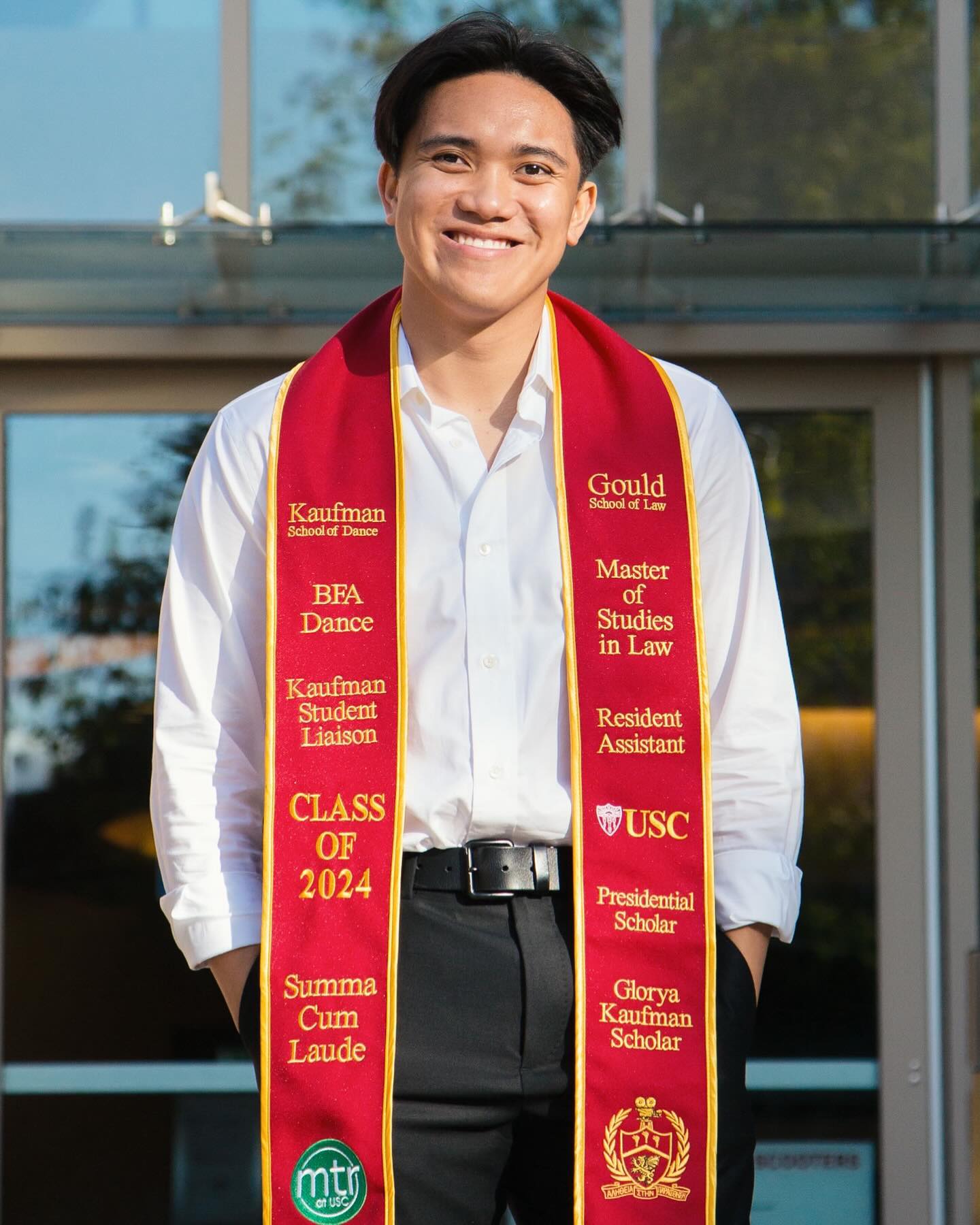
How has your advocacy background shaped the way you handle tough conversations in creative settings?
Sometimes staying authentic means having difficult conversations. If something in a production truly conflicts with my values—whether it’s how dancers are being treated or how we’re being asked to portray something—I’ve learned to speak up respectfully but firmly. My advocacy background has taught me that you can challenge systems while still being professional and solution oriented.
At the end of the day, I’ve realized that authenticity is also about being honest about why you’re there. I’m not on these productions to prove I’m the most unique artist in the room—I’m there to serve the project while bringing the best of what I have to offer. That service, that dedication to the collective vision while maintaining your individual artistry, that’s authentic too.
The productions that have felt most fulfilling are the ones where directors and choreographers created space for each performer’s individuality within their larger vision. But even when that space isn’t automatically given, I’ve found ways to create it through how I approach the work, how I connect with other artists, and how I carry myself throughout the process. Your authenticity isn’t just in your movement; it’s in your entire presence and how you contribute to the creative environment.
Want to learn more about Hayden’s work, projects, and creative journey?
Visit haydenrivas.com to explore his latest performances, advocacy efforts, and portfolio.







